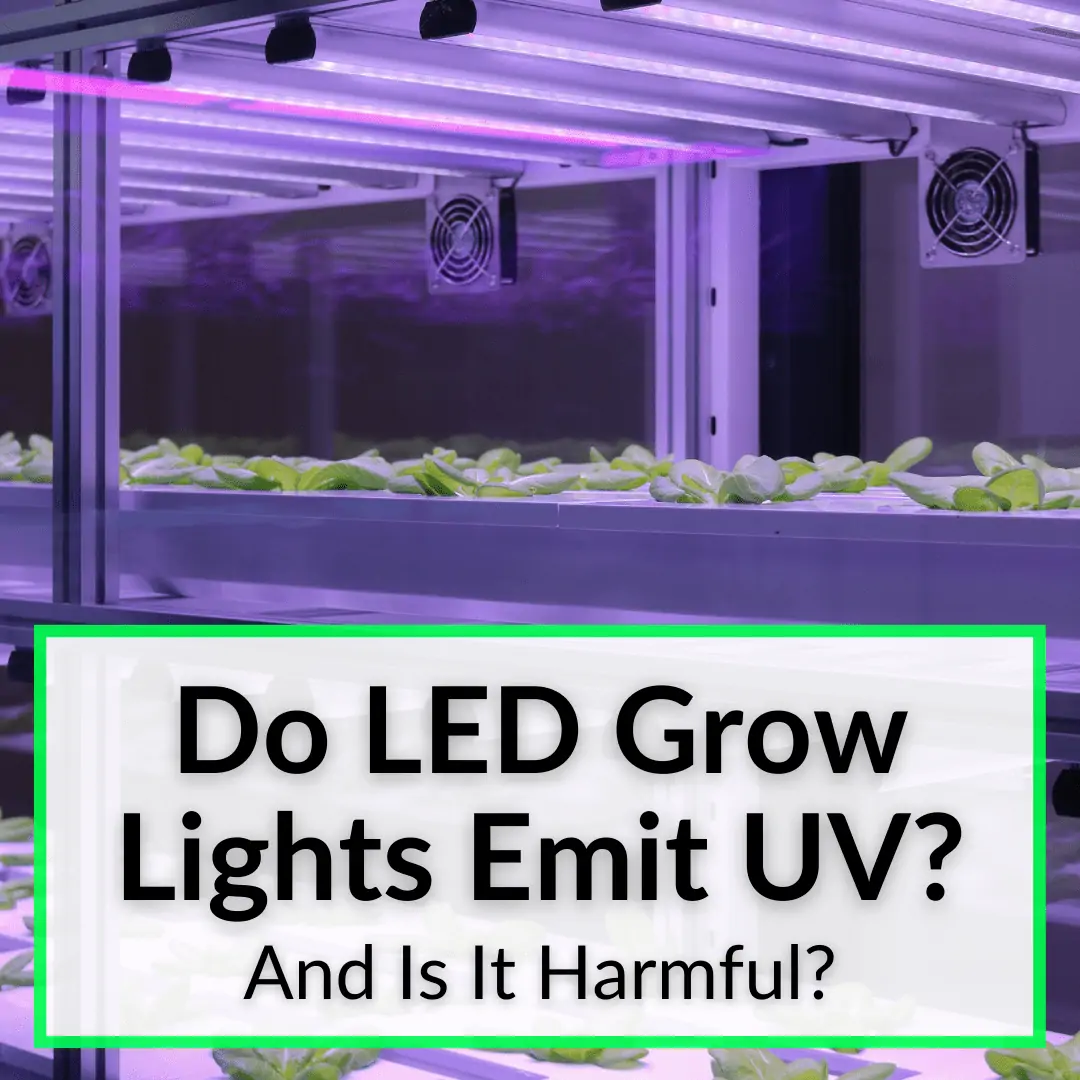 Some growers want UV light in their grow room.
Some growers want UV light in their grow room.
Others do not.
Both have valid reasons for feeling that way.
UV light has both benefits and drawbacks for plants. For humans as well.
If you want UV light, what types of lighting provide those wavelengths?
Do LED grow lights emit UV?
It turns out the answer is not just a simple yes or no.
Keep reading to learn if LED lights emit UV rays. We’ll also cover the benefits and dangers of UV light, plus other types of lighting that emit UV.
Contents
Do LED Grow Lights Emit UV?
It depends. The kind of LED lights used in commercial growing applications often do emit some UV radiation.
However, the small traditional LED light bulbs you have in your house produce none, or only very little.
Some LED grow light manufacturers add UV diodes to their lights, specifically for growing marijuana. These diodes are always UVA.
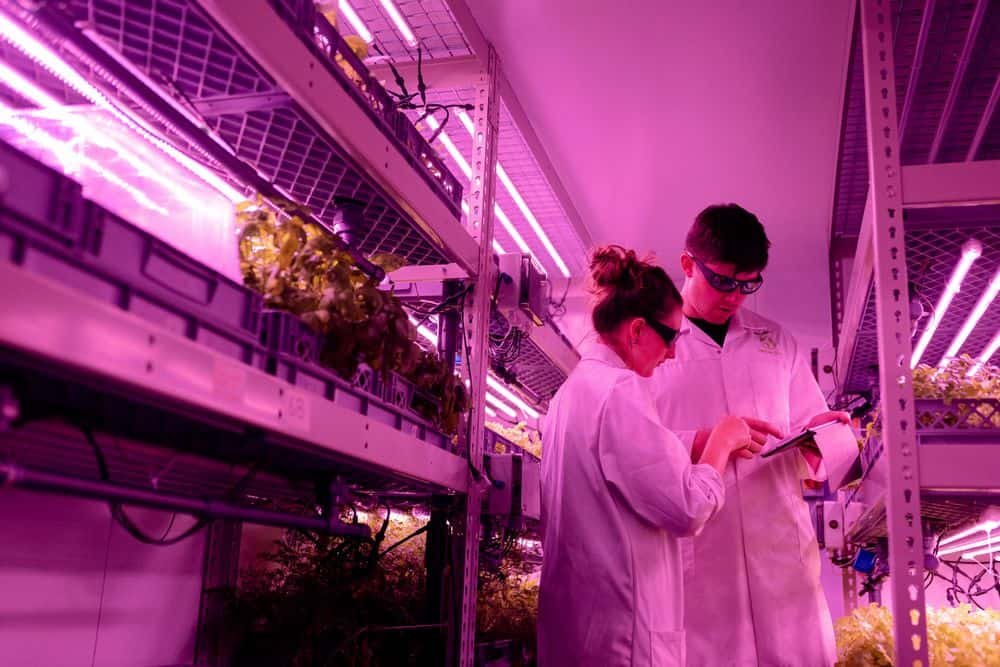
The most popular lights these days tend not to have UV light, however. It seems the industry is moving away from having UV diodes on LED fixtures. I prefer that anyway.
It is better to just get a separate UV bulb and use it to supplement your regular lights. That way, you can limit the UV light to the last few weeks of flowering, when it helps plants the most.
And you can only have it on a few hours a day, which is ideal. It is better not to have UV light going all the time.
For that reasons, some manufacturers add fluorescent UV bulbs, in order to have UVB light. We’ll get into the difference between the three types of UV light below.
What Is UV Radiation?
UV stands for ultraviolet. UV radiation comes from the sun and other artificial light sources. Humans and all plants on earth need it to grow and be healthy.
However, overexposure can be bad for humans and plants as well. As mentioned above, there are actually three main types of UV radiation.
- UVA
- UVB
- UVC
These three types of UV radiation differ based on their wavelength which is measured in nanometers.
UVA
UVA radiation has a wavelength of 315 to 399 nm and makes up 95% of all the UV rays that end up on the earth’s surface. It can penetrate deeper into our skin and bodies. UVA is what causes us to get a tan, which is bad for our skin and is technically skin damage.
UVB
UVB radiation has a wavelength of 280-314 nm and only makes up about 5% of the UV rays we have on the planet. It can not penetrate as deep into the skin as UVA but when it pairs with UVA, the two can cause some serious damage and are even known to cause skin cancer in severe cases.
Is UVB light good for plants? In small amounts, it can help plants grow and it can boost yields, just like it can help us by stimulating vitamin D production. But if your plants get too much, the UV-B can damage them, just like it does to our skin and eyes.
UVC
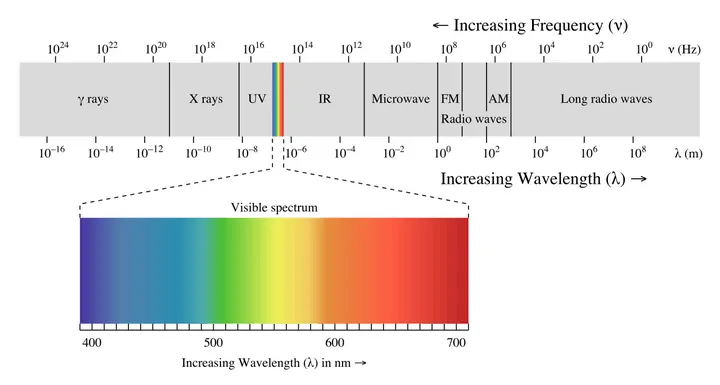
UVC radiation is completely absorbed by the atmosphere, which is a very good thing, because this stuff is really dangerous. It is the shortest wavelength of all three types at 100 to 279 nm. It can cause severe damage to the eyes and skin, even if the exposure is only for a short amount of time.
Negative Effect Of UV Radiation
You are probably aware that UV radiation is bad for us. It’s also bad for plants. But do you know why it is bad? Let’s find out.
Humans
UV radiation can cause sunburn in the short term. This is an irritating and painful burn on your skin, where it turns red and hurts when you touch it.
Over time the burn will turn brown and become a dark tan, which some people believe makes them look healthier. Others think the exact opposite.
In the long term, UV can cause additional problems. Some long-term ill effects of UV radiation include:
- Eye Problems: bright light of any kind can be bad for your eyes when you expose them to it for a long time; UV light is even worse, because it penetrates the lens and actually gets into the inside of your eyes, damaging them over time
- Premature Aging: wrinkles and yellow leathery skin are the result of a long life lived in the sun with no protection; your skin becomes droopy, and the elasticity is reduced when UV rays are constantly shining and penetrating deep into your layers of skin
Cannabis Plants
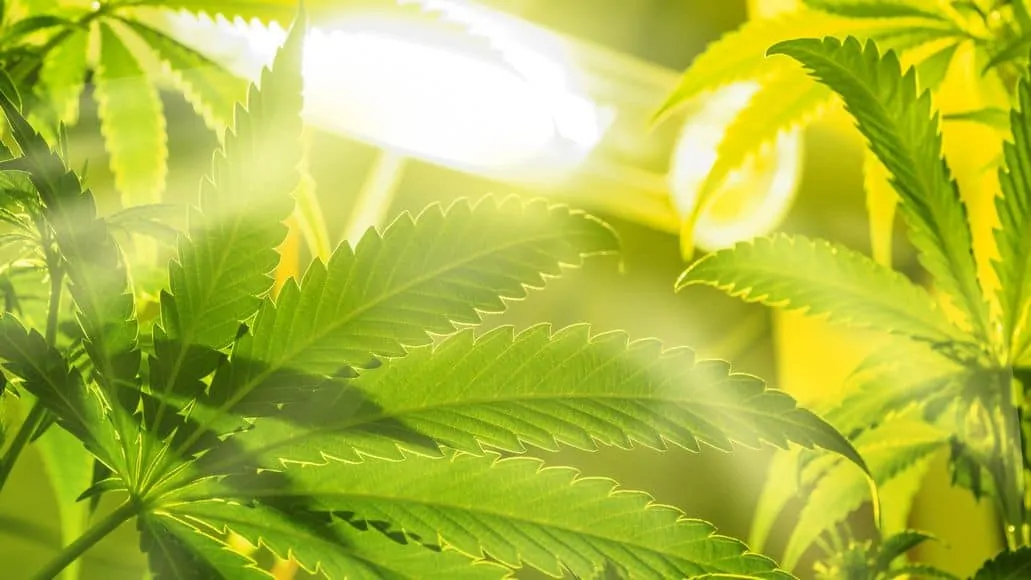
Exposing your plants to too much UV light can stress them and cause them to become damaged and unhappy. However, exposing them to the right amount of UV can cause increased terpene, cannabinoid, and trichome production.
Just like humans, cannabis plants have natural mechanisms to protect themselves from too much UV radiation and it is those protections that lead to the positive benefits.
Positive Effect Of UV Radiation
On the other hand, UV radiation also has its benefits, both for plants and for us. Let’s take a look.
Humans
UV radiation in the correct amount has three main health benefits for humans.
- Production of Vitamin D
- More energy
- Better Mood
Vitamin D
Vitamin D is a necessary vitamin for humans to grow and thrive. It is a vitamin that helps us absorb phosphorus and calcium, which are critical for keeping our bones strong. It has also been shown to reduce cancer cell growth and help reduce infection and inflammation in the body.
It is safe to say vitamin D is not optional for humans. We must get it from somewhere. UV radiation from the sun is the easiest and most natural way to get it.
More Energy And A Better Mood
UV light (full spectrum) has been shown to help people with low energy and depression gain more energy and be more motivated to get things done and get moving. In the same way that it seems to give you more energy, it is also shown to improve your mood.
I am not certain of the physiology behind it or what is physically happening in the body that makes this happen, but there is no denying that light therapy is quite effective for improving the mental state and energy level of depressed or run-down individuals.
Cannabis Plants
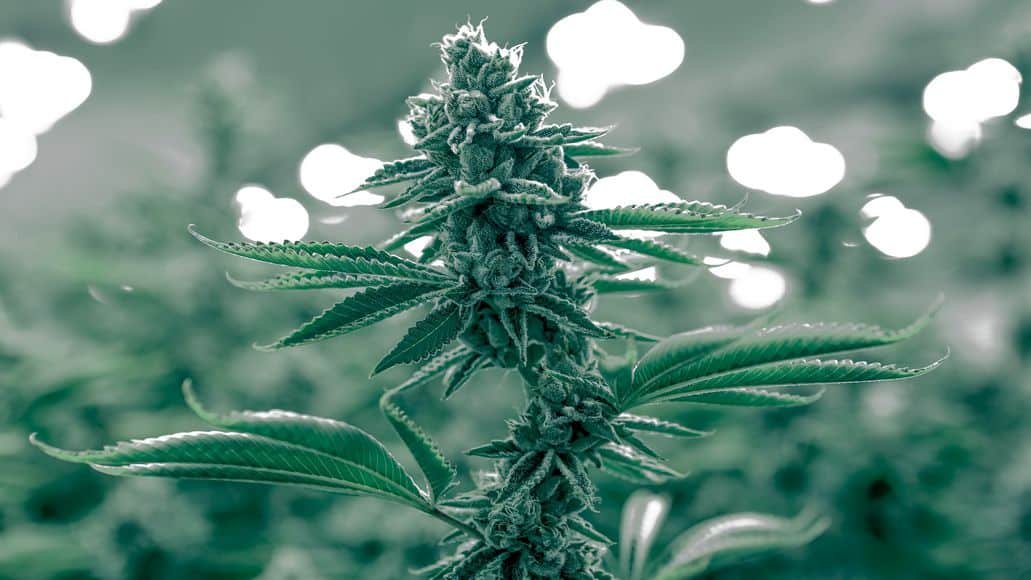
Cannabis likes UV radiation, if you use the quality of the flowers it produces as proof. Plants that are exposed to UV light will have more potent flowers than those that are deprived.
This is a result of the plant’s natural defense mechanism. It tries to protect itself from the UV rays, and that results in denser trichomes and more THC.
It stands to reason that since it also increases terpene production that UV rays are one of the most critical ingredients to making a powerful flower. Of course, too much light will hurt your plants and mess up their internal clock.
Other Types Of Lamps And UV Radiation
We have already learned that some LED fixtures have UV light and some don’t. It is up to the manufacturer to decide whether to include UV diodes, or a UV bulb, in their fixtures.
But what about other types of grow lights? Do they also emit UV light? Let’s take a look.
Incandescent
Incandescent lamps do produce UV radiation. However, it is at quite a low level and is generally considered to not be dangerous or consequential to humans. Unless you have super high-powered light bulbs on for hours at a time.
High-Pressure Sodium
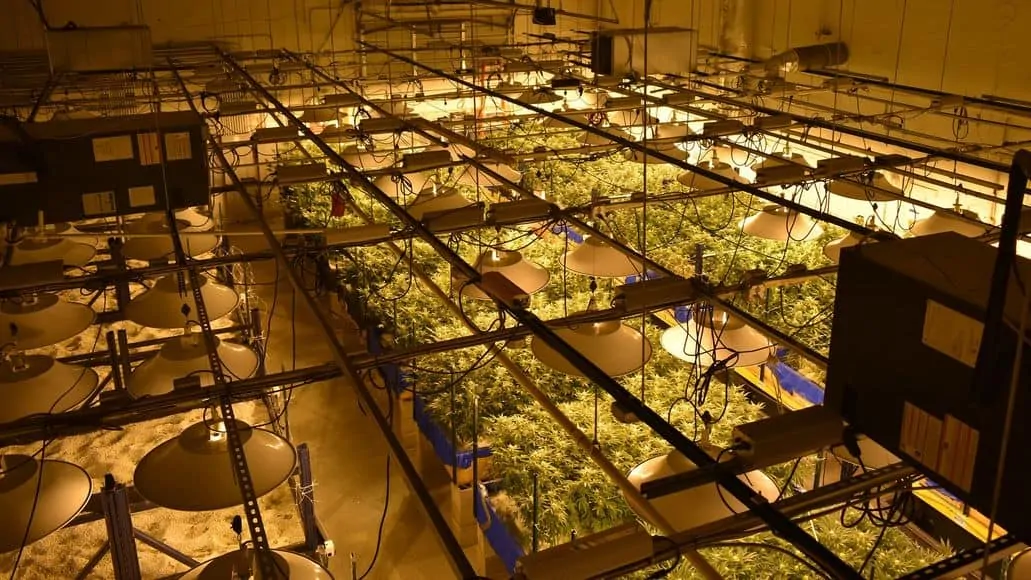
HPS lamps also produce a lot of UV rays. However, their glass bulb housings are coated on the inside to help filter out most of them. In the end, HPS lamps are fairly safe as long, as you are aware that they do still emit some UV rays.
Metal Halide
Metal Halide lights produce UV and IR radiation as well. They produce much more than full spectrum LED lights do.
Fluorescent
Fluorescent lamps and CFLs both produce some UV radiation. Again the level is quite low and you need a special instrument just to measure the levels, since a normal UV meter won’t pick up the emissions from normal fluorescent light.
Mercury Vapor
MV lamps produce a significant amount of UV radiation. This is the most powerful UV radiation source you will find (at least among the cannabis-growing community).
We recommend using these lamps with caution (or better yet, not using them at all; LED or CMH is better), especially the commercial-sized units that produce vast amounts of light. This grow light is bad for your skin, for sure.
LED Grow Lights Emitting UV: Final Thoughts
Some LED grow lights emit UV wavelengths, while others do not. With LED fixtures, the manufacturers can choose whether to include UV diodes (UVA) or a fluorescent tube (usually UVB) in their fixtures.
That means you can choose whether you get a fixture with UV light. However, it is actually better to get one without (the best LED fixtures on the market today tend to not have any UV diodes) and just buy a fluorescent UV bulb separately, if you want to add some UV light to your grow.
The reason for this is that plants really only benefit from UV toward the end of flowering, and then, only a few hours per day is ideal. And without UV-emitting diodes, LED grow lights are much safer for us humans.
Kent Lawson says
i have had cataract surgery. A Light Adjustable lens has been placed in my eye. I have grow lights in my home and wonder if they will interfere with the future efficiency treatment of my lens.
Steven says
That’s a good question, but I have no idea. That’s something you should definitely ask your doctor.